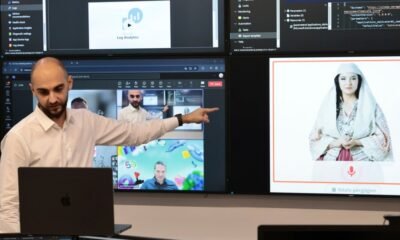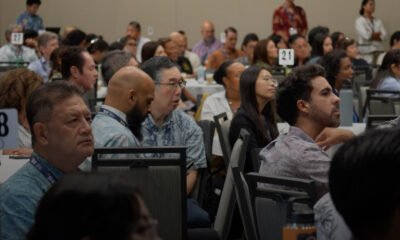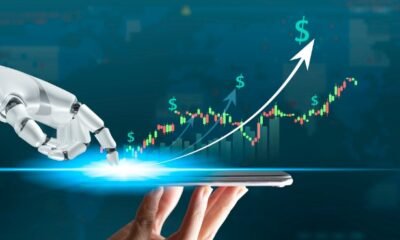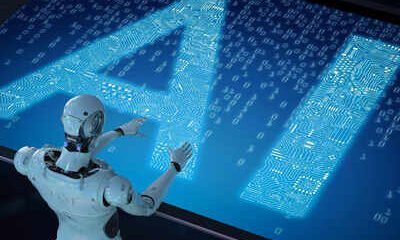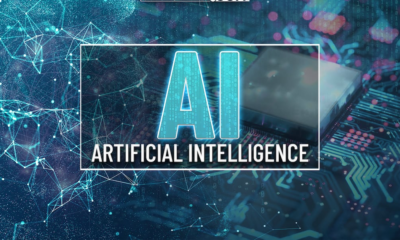Tools & Platforms
How AI Will Unlock Small Business Growth

Artificial Intelligence
getty
If AI is going to matter at all in our economy, it has to matter for small businesses first.
As a search fund entrepreneur, I’ve met and worked with more than 300 CEOs and founders in cities across the U.S. from New York to Las Vegas, Sunnyvale to Maryland. In every conversation, the same concern surfaces: the AI models in our smartphones are more advanced than the technology stacks running our businesses. While the devices in our pockets update monthly, most business systems remain unchanged for years. And nowhere is this more evident than in small businesses.
This matters because small businesses employ more than 61 million people, nearly half the private workforce. Yet just a fraction of 1% are building the kinds of technology ventures that attract institutional capital.
So this means that the overwhelming majority of small businesses are self-funded and family-run. They’re bootstrapped by owners who pour their own savings into businesses that anchor the communities they care about. These are the businesses still running payroll on technology built a decade ago.
Family Businesses Meet AI Startups
Trusted relationships build businesses.
getty
The other day, I joined a lunch meeting with 80 small business owners who lead multi-generational family firms. This gathering was a masterclass in human networks. However, not once was technology mentioned in the entire meeting.
Every three weeks, all 80 members gather at a private club on Park Avenue for a three-course meal. The purpose was to share business priorities and make referrals and introductions for each member. There were green pens and notepads on the tables embossed with the motto: “Trusted relationships build businesses.” Over lunch, if each of the 80 members received just five new customer introductions, that’s over 400 new channels opened before dessert.
Four hours later, I was downtown at the city’s newest restaurant for a startup forum. Here, every conversation was about AI and technology, from AI-powered roll-ups and cybersecurity to founders turning New York’s vacant warehouses into sushi pop-ups.
Startup Forum in NYC Restaurant
New York, NY
Two Worlds In One City
Across every city I’ve traveled to, these two business communities live side by side but rarely meet. One is led by families built through trusted introductions and intellectual property developed over decades. The other is driven by startups fueled by the race to deploy the newest technology at scale.
What happens when these two worlds connect? Imagine today’s most advanced technology powering small family-owned businesses.
For the past 40 years, one model of entrepreneurship has created more than $10 billion in value by doing exactly this: investing in established small businesses and building them with new technology and leadership. The Search fund model, first launched at Stanford in 1984, was designed to bring innovation into established firms. One of the earliest search funds invested in a 50-person roadside assistance company and built it into Asurion, now a global tech-care enterprise with 23,000 employees and 300 million customers. Another transformed a compliance services firm into RIA-in-a-Box, a leading SaaS platform used by over 2,600 firms nationwide.
What once took years and significant capital investment can now be done in months. Today, enterprise-grade tools once reserved for Fortune 500 corporations are within reach of nearly every business. The playbooks that small businesses have relied on for decades to build multi-generational, value-based businesses can, when paired with AI, scale impact in weeks instead of years.
Across core functions, generative AI is cutting work times by more than 60%. If you can sketch an idea on a napkin, it can be built in hours, not weeks. Supply chains, compliance, document processing and technical workflows are already showing double-digit productivity improvements. In some cases, technical tasks have been reduced by as much as 70%.
Search funds are one proven path to bringing technology into legacy businesses. Others are emerging as well, including AI consulting firms, AI studios and AI-powered roll-up strategies, each with their own strategies to rebuild established firms with the most advanced technology available today.
The tools are here, the cost has never been lower, and the door is wide open—for now.
If AI is going to matter at all, it has to matter for small businesses first. Once it’s put to work, it will power growth across Main Street and fuel an economy that directly supports half the workforce.
Tools & Platforms
Profusa Deploys NVIDIA AI to Build AI-Driven Insight Portal for Continuous Biomarker Monitoring
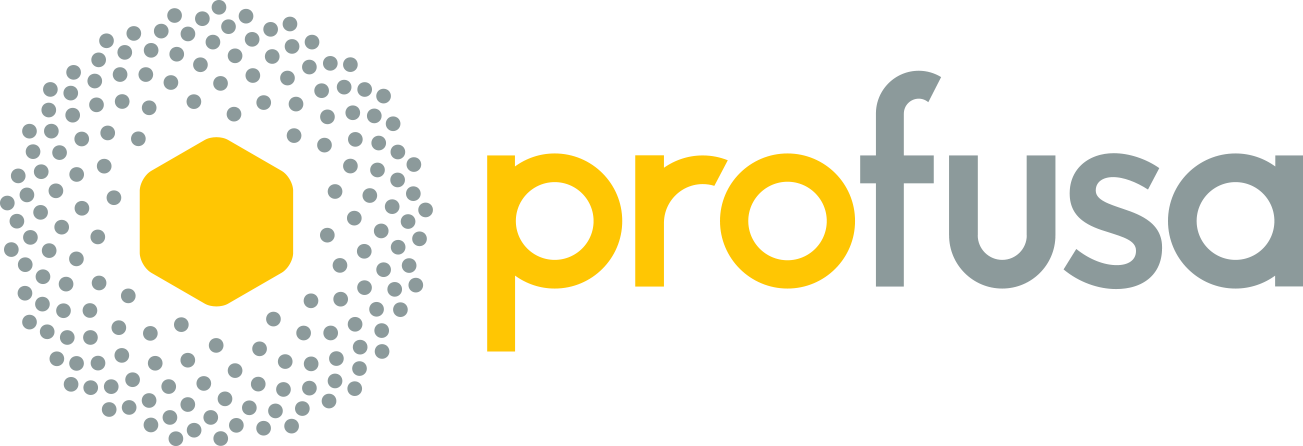
What You Should Know:
– Profusa,, a digital health company, has announced the adoption of NVIDIA technology to power a new AI-driven insight portal for continuous biochemistry monitoring.
– The portal will be used in combination with Profusa’s Lumee oxygen optical hydrogel sensors and reader system, extending the company’s AI-enabled tools to remote patient monitoring settings. Profusa anticipates an early 2026 rollout of the portal in the European Economic Area (EEA).
– Profusa believes that real-time biochemistry data across a large population is a data set currently missing for AI-enabled healthcare improvements. By combining its Lumee platform with NVIDIA NeMo hardware and software, Profusa plans to build a scalable, AI-fueled technology backbone to improve personalized sensor data accuracy and connect real-time sensor data with electronic medical records (EMR).
Redefining Healthcare with AI-Fueled Workflows
The new portal is designed to provide physicians with “trustworthy, always-on insights” rather than just more dashboards. It aims to translate raw optical signals from the sensors into reliable biometrics and provide actionable clinical context.
Expected capabilities and features of the physician portal include:
- Agentic clinical workflows: An AI-powered assistant that integrates with EMRs, wearables, and home devices to help with notes, orders, care plans, remote monitoring, and triage.
- Time-aligned health data graph: A longitudinal view that combines Profusa biomarkers with EMR data, claims, wearables, genomics, and social determinants to power predictions and coaching.
- Guardrails by design: The system will use policy-aware orchestration to enforce clinical scope, data privacy, and safe responses.
- Model training options: The platform will allow for parameter-efficient tuning and post-training refinement of Profusa’s AI signal processing and clinical reasoning components.
“We believe that real-time biochemistry data across a large population is a data-set that is currently missing to enable the fulfillment of the promise of AI-enabled improvement in healthcare. Profusa is uniquely positioned to provide this proprietary data set, linking therapeutic decisions with real-time biochemistry changes, to generate valuable insights that are lacking today.” Ben Hwang, Ph.D., Profusa’s Chairman and CEO commented, “By combining our Lumee platform with the industry leading NVIDIA NeMo hardware and software stack, we plan to build an AI-fueled, scalable technology backbone for better personalized sensor data accuracy and real-time sensor data connections with electronic medical records (EMR), facilitating treatment and outcome predictions, in addition to establishing a robust data base for clinical literature for disease management.”
Tools & Platforms
Will AI replace human workers? The CIA, Anthropic, OpenAI and Microsoft weigh in
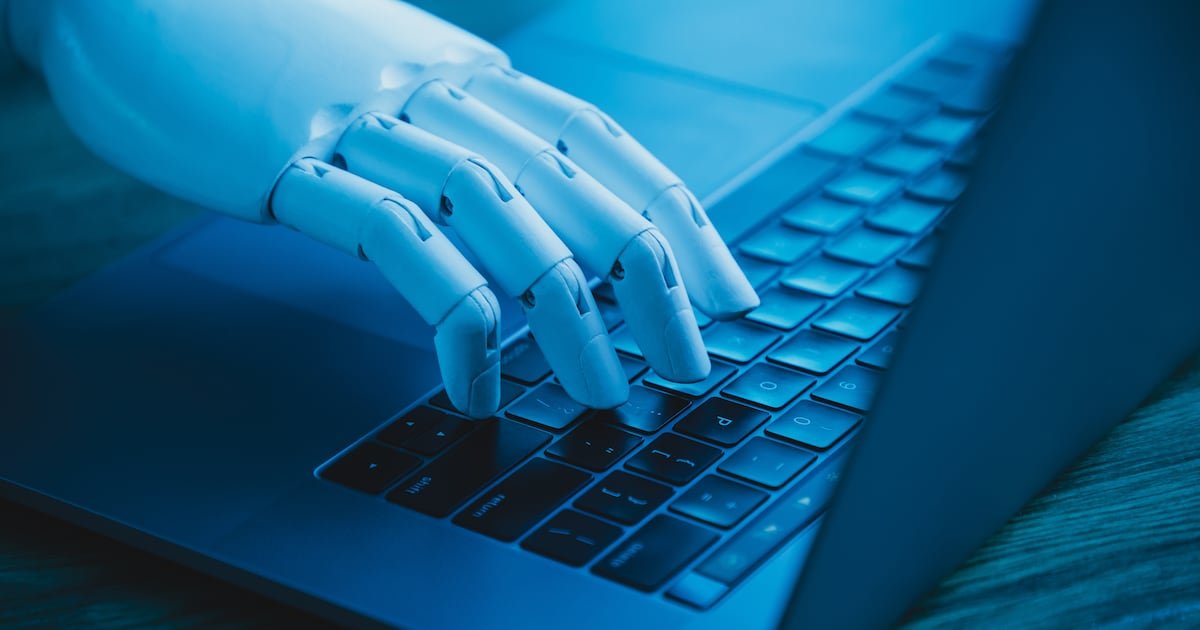
Flanked by high-level employees from OpenAI, Microsoft and Anthropic, the CIA’s chief artificial intelligence officer said that humans must remain “in the loop” as artificial intelligence tools become more powerful and prevalent.
CIA AI officer Lakshmi Raman said the agency is placing a strong emphasis on making sure AI is closely monitored for how it helps workers enhance their skills.
“It’s all about how AI can assist and amplify the human, with the human keeping an eye on everything that’s happening,” Ms Raman said during a panel discussion on Friday at the Billington Cybersecurity Conference in Washington.
Her comments come amid concerns that AI’s ability to automate various processes that might lead to major labour disruptions and widespread unemployment.
Sean Batir, the panel discussions moderator and principal technology lead for Amazon Web Services, echoed those sentiments.
“There’s definitely a fear of having these [AI] models in workplaces, and I think that role you mentioned of having humans always in the loop is one way to address that,” he said.
Jason Clinton, chief information security officer at Anthropic, said humans need to take a supervisory role with the implementations of AI, and that despite the ability of the technology to increase efficiencies, soft skills that only humans can offer will be paramount.
“You know, the one of the things that the models will never be able to do is to bring humanity to the equation,” Mr Clinton added.
Joseph Larson, the vice president of government at OpenAI, whose ChatGPT sent AI interest to unprecedented heights in 2022, said the company’s goal is to develop the technology for the benefit of humanity, adding that OpenAI has hired a chief economist to look into potential economic ramifications.
Despite fears, Mr Larson said AI does not automatically mean a reduction of workers.
“It lends itself to creating more organisational output, like improved organisational output,” he added.
OpenAI, Microsoft and Anthropic, among others pouring billions into AI development have sought to expedite the adoption of their tools, but also provide ways for government workers, students and others to try to reduce the learning curve through various initiatives.
Those efforts, however, are coming up against mounting fears of redundancies, cutbacks and hiring slowdowns stemming in part from AI.
Recent studies have also led some to wonder if fears of AI’s potential impact on the labour sector are overblown.
An MIT Media Lab report recently stated that despite billions being spent over the past few years on AI investments, approximately 95 per cent of organisations have produced zero returns so far.
That report, however, has come under intense scrutiny over the methodology used to reach that conclusion.
Meanwhile, for US technology companies both old and new, and aspiring technology companies all over the world, the investment in AI shows no sign of slowing down.
For many humans, AI tools are slowly but surely becoming a part of their daily routines, even with polling suggesting many fears about what that could mean in the long term.
Tools & Platforms
Hundreds turn out for AI and Cloud Innovation Summit at the Hawaiʻi Convention Center : Maui Now
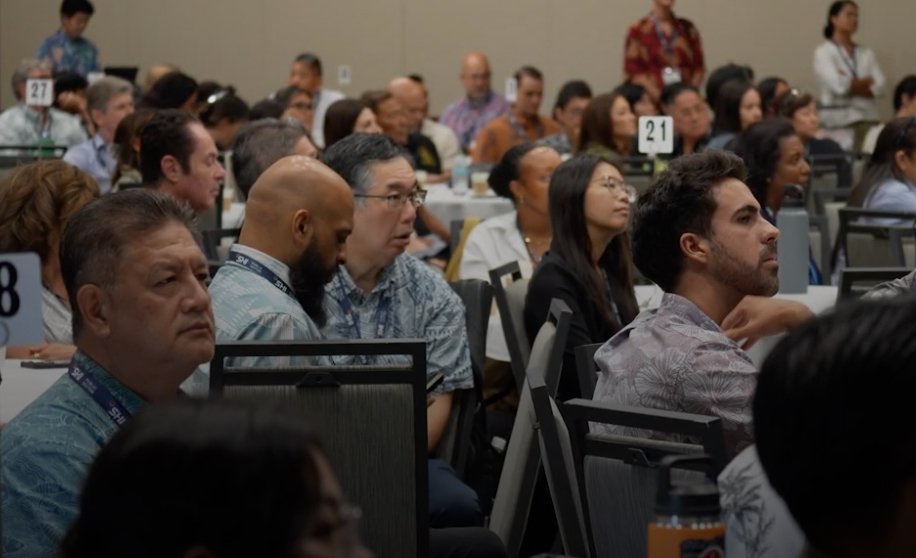
The fourth annual Hawaiʻi AI and Cloud Innovation Summit drew nearly 500 professionals, educators, and technology partners to the Hawaiʻi Convention Center on Wednesday, highlighting the state’s commitment to exploring technological innovation.
The state Department of Business, Economic Development and Tourism presented the event in partnership with Google Public Sector and the TRUE Initiative. Discussions focused on how artificial intelligence and cloud technology are being applied in real-world scenarios.

“Today was about having real conversations about what’s working, where the gaps are, and how we can continue learning from one another,” said department Director James Kunane Tokioka. “It was great to see leaders from across government, education, and the private sector coming together to explore how we can use technology to better serve our communities and strengthen Hawaiʻi’s future.”
Christine Sakuda, the state’s chief information officer, said the summit aimed to showcase Hawaiʻi’s innovative AI and Cloud technology projects, and to “bring in expertise from the continent, on what else is going on in the world that we could leverage in Hawaiʻi, because we’re doing some great work in Hawaiʻi that’s a model for the rest of the world.”
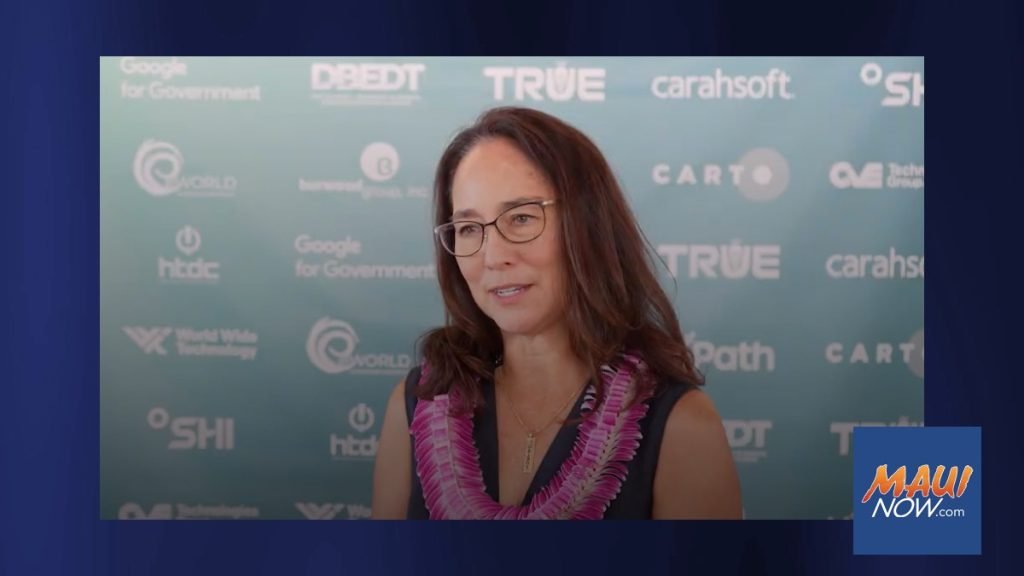
Artificial intelligence “is really there as a tool and an enabler,” she said. “It doesn’t replace people by any means. It’s really there to help people do their jobs better and more effectively.”
Sakuda said she hoped summit attendees came away feeling inspired and having a better understanding of artificial intelligence and Cloud technology. Then, they can take what they’ve learned and apply it to their work or personal lives, she said.
“Because AI can be intimidating,” Sakuda said. “There’s so many state workers here that are learning and being inspired about all the technology.”
Summit attendee Kevin Olival, associate dean for research at the College of Tropical Agriculture and Human Resilience at the University of Hawaiʻi, said he was excited to learn more about AI and how it could be used in his work at the university.

Workflow can be streamlined and research made more efficient, Olival said, adding that he appreciated the opportunity to network and meet people to learn what they’re doing with technology statewide.
“I think we need to embrace it,” he said of AI. “If we’re afraid of it, then we won’t make advances.”
At the same time, “I think that we need to put in the right safeguards,” he said. “That’s a critical component, but I think that unless we really embrace it and play with it; we’re not going to advance things and learn.”
The summit featured keynote speakers, panel discussions and breakout sessions that showed how AI is being used to improve government services, support small business growth, enhance cybersecurity and expand career opportunities for local residents.
-

 Business2 weeks ago
Business2 weeks agoThe Guardian view on Trump and the Fed: independence is no substitute for accountability | Editorial
-
Tools & Platforms1 month ago
Building Trust in Military AI Starts with Opening the Black Box – War on the Rocks
-

 Ethics & Policy2 months ago
Ethics & Policy2 months agoSDAIA Supports Saudi Arabia’s Leadership in Shaping Global AI Ethics, Policy, and Research – وكالة الأنباء السعودية
-

 Events & Conferences4 months ago
Events & Conferences4 months agoJourney to 1000 models: Scaling Instagram’s recommendation system
-

 Jobs & Careers2 months ago
Jobs & Careers2 months agoMumbai-based Perplexity Alternative Has 60k+ Users Without Funding
-

 Podcasts & Talks2 months ago
Podcasts & Talks2 months agoHappy 4th of July! 🎆 Made with Veo 3 in Gemini
-

 Education2 months ago
Education2 months agoVEX Robotics launches AI-powered classroom robotics system
-

 Education2 months ago
Education2 months agoMacron says UK and France have duty to tackle illegal migration ‘with humanity, solidarity and firmness’ – UK politics live | Politics
-

 Funding & Business2 months ago
Funding & Business2 months agoKayak and Expedia race to build AI travel agents that turn social posts into itineraries
-

 Podcasts & Talks2 months ago
Podcasts & Talks2 months agoOpenAI 🤝 @teamganassi


